Employee Engagement Strategies: The Ultimate Guide to a Better Workplace
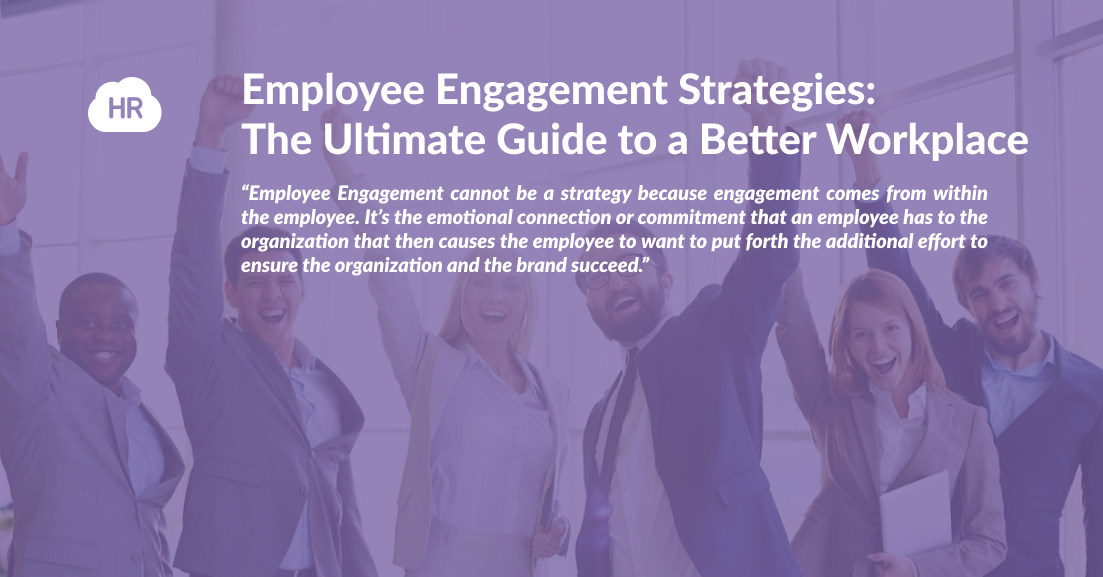
- What is Employee Engagement?
- Hire With Engagement in Mind
- Streamline Onboarding
- Clarify the Company's Mission
- Set SMART Goals and an Action Plan
- Promote a Strong Company Culture
- Establish a Sense of Community
- Recognize Employee Contributions
- Hire Quality People Managers
- Provide Incentives for Work Achievement
- Facilitate Two-Way Communication
- Utilize HR Software
- Conduct Employee Surveys
- Engage Departing Employees


 Cut onboarding time
by 60%—here's the
Ultimate Checklist
that helped do it.
Cut onboarding time
by 60%—here's the
Ultimate Checklist
that helped do it.

What makes a workplace a place of work? Is it the location, the office building, the equipment, or the amenities? No, it’s the people who determine both the quality of the workplace and the future of the organization. Understanding how to engage employees and foster engagement in the workplace is crucial for organizational success.
In a 2017 study by Gallup, it was found that only 15% of the world’s one billion workers are engaged at work. This Gallup employee engagement study reveals a downward spiral that originates with our lack of understanding of human capital management, or more specifically, employee engagement.
The more engaged employees, the better it is for the organization. With effective employee engagement ideas, employees are motivated to give their best, resulting in higher profitability, better customer retention, better talent acquisition and staff retention, lower employee turnover, and a safer work environment.
But remember: An effective employee engagement strategy is not a one-day affair. Only an ongoing process will obtain incredible results and improve the overall employee experience.
What is Employee Engagement?
Employee engagement sounds simple, but it goes deep. A good employee engagement strategy improves the likelihood that the relationship between the employee and the organization will be positive in nature. Engaged employees:
-
Are self-motivated
-
Have a clear understanding of their roles
-
Recognize the significance of their contribution
-
Focus on future training and development
-
Feel that they belong to a community—that is, the organization
The Benefits of an Engaged Workforce
Effective employee engagement results in more motivation and better job satisfaction, and thus, a lower cost-to-value ratio for your human personnel expenditure. It goes like this: While every employee adds to the bottom line, engaged employees add that much more.
This idea, also known as the service-profit chain, was introduced by Harvard researchers in the 1990s, which traces business profitability and customer loyalty right back to engaged, motivated employees.
Top corporate leaders know that engaged employees can help raise productivity, increase profits, enhance customer experience, foster brand loyalty, and facilitate growth. Understanding the drivers of employee engagement is key to achieving these benefits and improving employee satisfaction and retention.
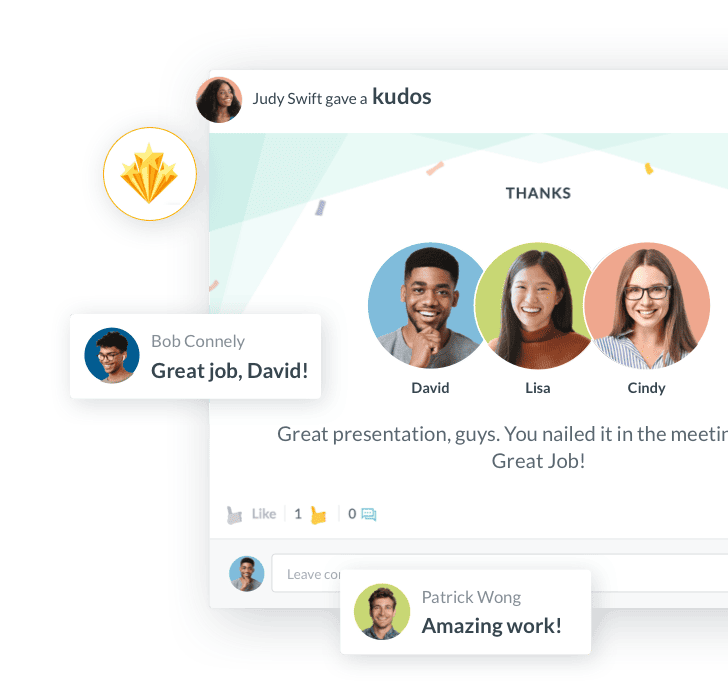
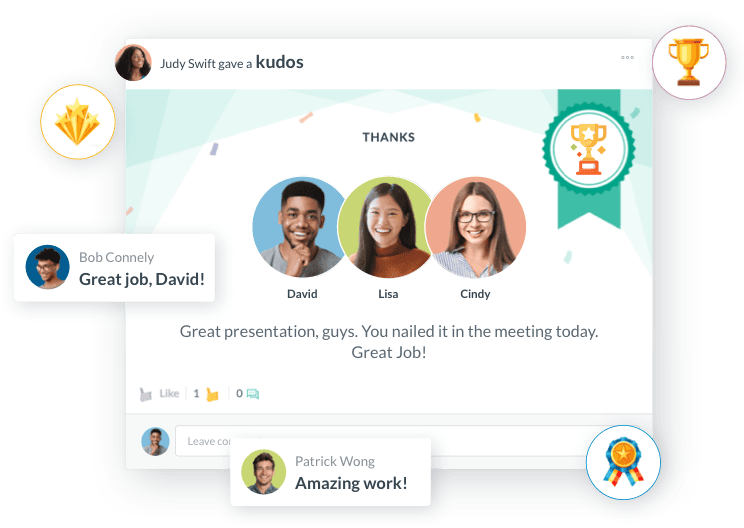
The Best Employee Engagement Strategies
Below, you’ll find an outline of the steps you can take in order to ensure that the employees achieve a positive emotional connection with the organization and the work they’re assigned to do. These employee engagement best practices encompass three main parts:
1) Physical
The level of complexity of work corresponds to the employees’ skill set.
2) Emotional
Employees understand the job’s significance and put their heart into it.
3) Mental
Employees become engrossed with their work.
1. Hire With Engagement in Mind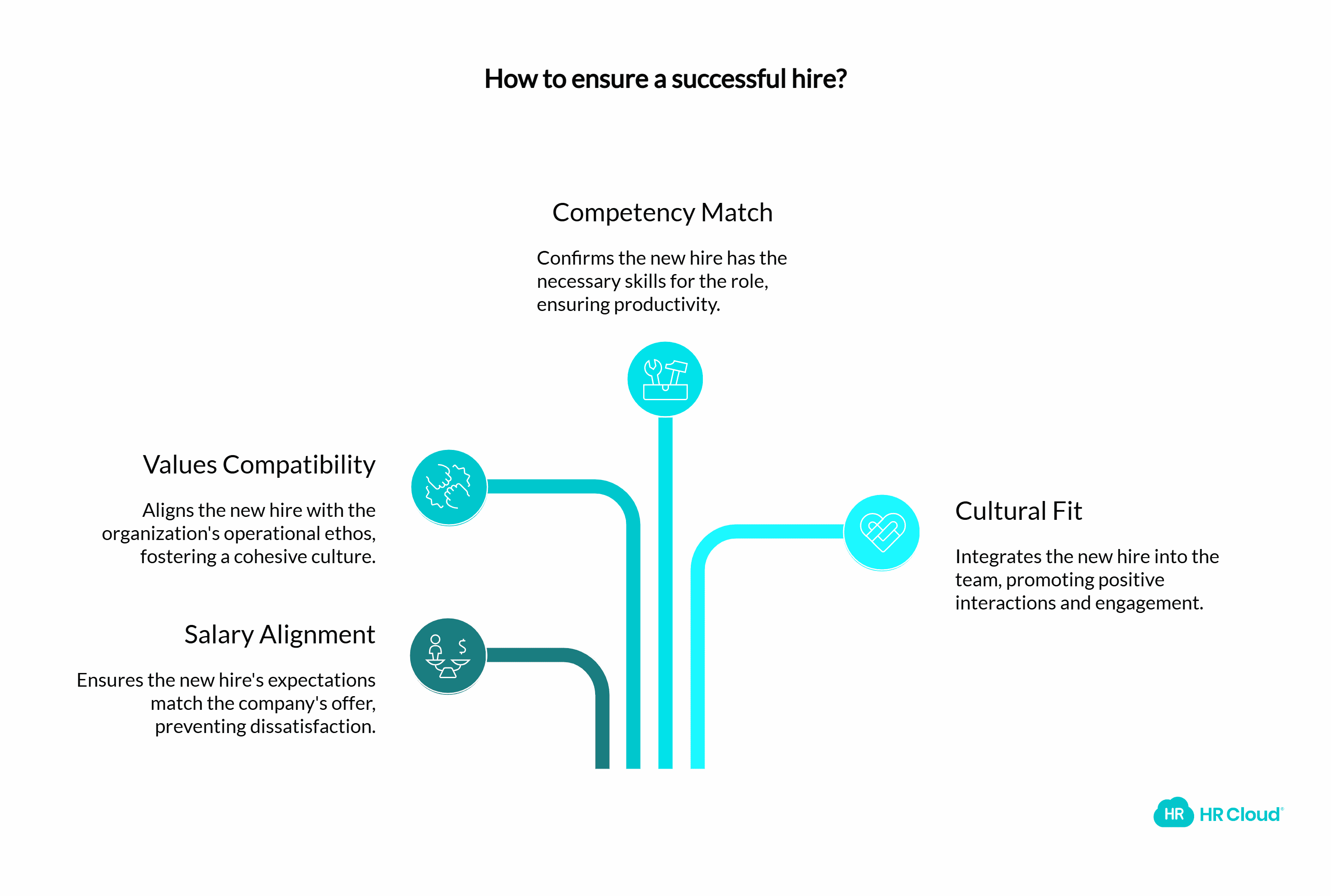
The decisions you make during the hiring process can lead to different results in the engagement of an individual employee as well as workforce engagement across the organization.
Every new hire you make can impact how employees interact with each other, either strengthening the values of your organization or detracting from the workplace culture.
A successful hire occurs when a new employee aligns with the organization in many different aspects, including job details as well as the company’s overall culture.
a) Salary: Your new employee’s salary expectations should match what the company can unfailingly offer.
b) Values: Your new hire should respect how the organization operates to attain its goals.
c) Competency: The new hire should have the skills to meet the responsibilities of the position.
d) Culture: The new hires should possess personal and emotional skills to be on the same page with their new colleagues and management.
This doesn’t just impact current employees; new hires should be adequately prepared for their new positions, too.
According to a Jobvite survey, 43% of new hires leave their jobs in the first 90 days as they felt that the role described during the process of hiring wasn’t what they experienced when they began to work.
Your newest employees will evaluate their experience more carefully during the initial few weeks with your business. If you are able to provide what you promised during the hiring process, it will deepen that initial good impression and make way for employee engagement.
2. Streamline Onboarding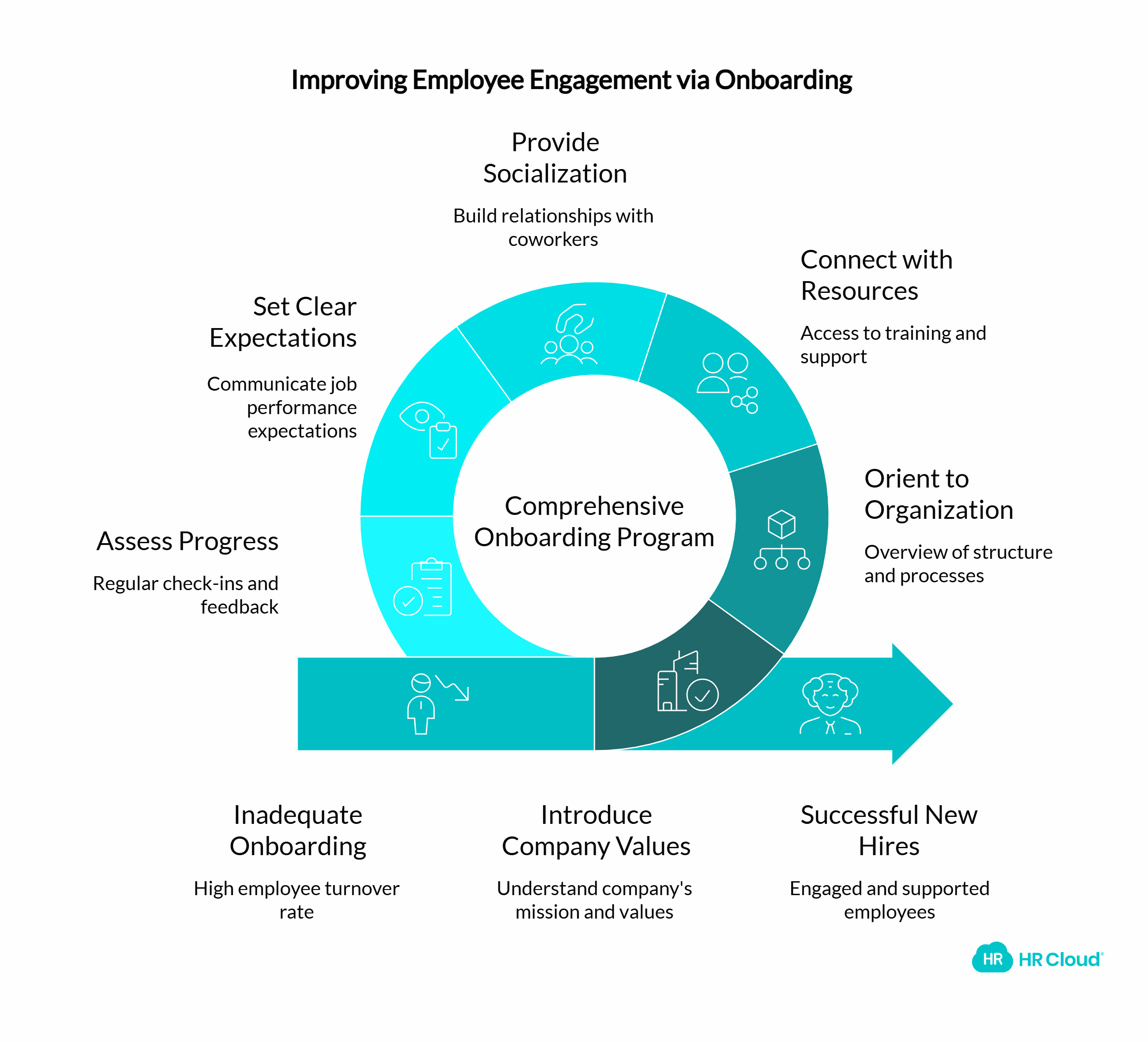
Developing a comprehensive employee onboarding program can be a powerful way to improve employee engagement and support the success of new hires. A good onboarding program should:
-
Introduce new hires to the company's mission, values, and workplace culture: Help new hires understand the company's purpose and how they fit into the organization.
-
Orient new hires to the organization: Provide an overview of the company's structure, processes, and systems.
-
Connect new hires with resources and support: Ensure that new hires have access to the resources and support they need to be successful, such as training materials, a mentor, or a go-to person for questions.
-
Provide opportunities for socialization: Help new hires get to know their coworkers and build relationships within the organization.
-
Set clear expectations: Communicate expectations around performance, attendance, and other aspects of the job.
-
Assess progress and provide feedback: Regularly check in with new hires to assess their progress and provide feedback to help them succeed.
Your new hires are only learning to navigate the complexity and will need assistance in specific areas. Thus, your first step should be to understand their viewpoint and work towards offering an onboarding experience that will keep them engaged and boost employee morale.
According to data from ServiceNow, organizations that offer inadequate onboarding programs have twice the chance of facing employee turnover.
The first impression is crucial and will have a significant impact on new employees’ expectations.
3. Clarify the Company's Mission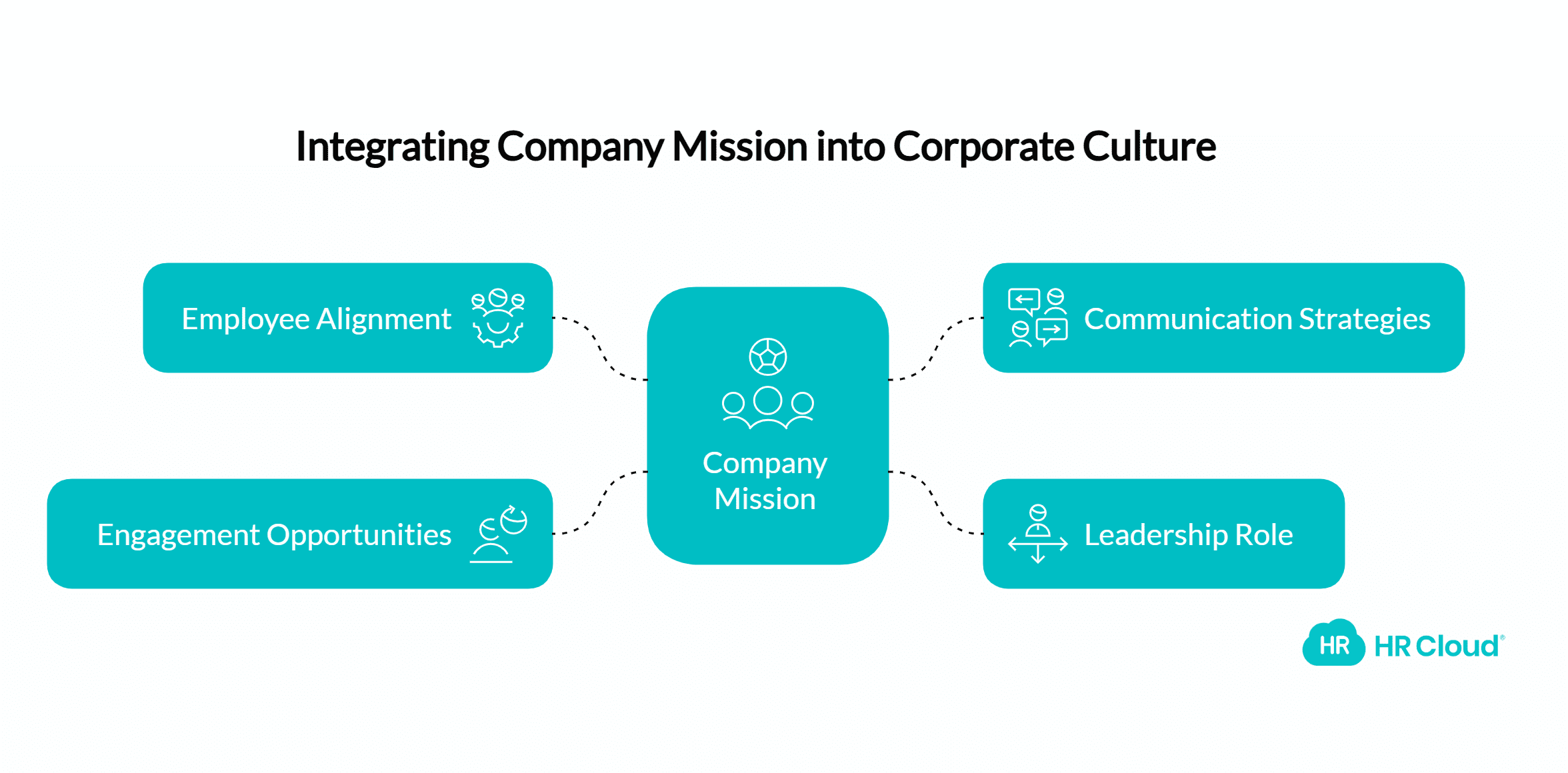
By making the mission a central part of the corporate culture, employees are more likely to feel aligned with the company's goals and motivated to contribute to its success. When employees know the overarching goals and values of the organization, they can see how their individual roles contribute to larger objectives, rather than just outcomes.
To effectively communicate the company's mission, management should integrate it into all aspects of the workplace, from onboarding sessions and employee training programs to regular team meetings and company communications.
Leaders should consistently emphasize and relate back to the mission in daily interactions and decision-making processes, helping employees connect their tasks to the company's broader goals.
Additionally, creating opportunities for employees to engage directly with mission-related projects or community initiatives can reinforce their commitment and understanding of the company's purpose, enhancing overall employee empowerment.
4. Set SMART Goals and an Action Plan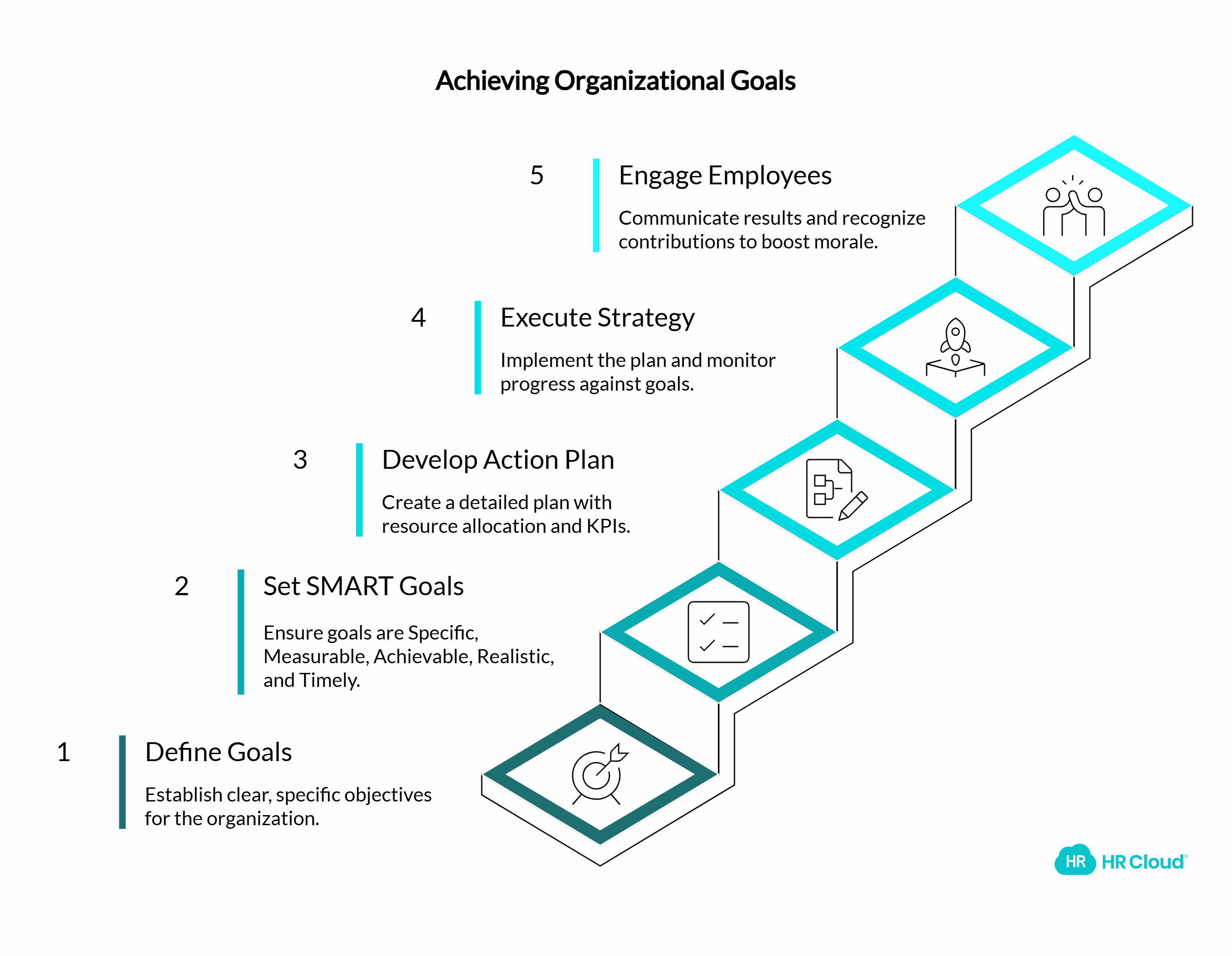
Without any goals, an organization doesn’t have a direction to follow. What does it want to achieve? What does it need to improve? What is the role of the strategy? All these questions need to be answered first.
Moreover, the goals that you set need to be specific, measurable, achievable, realistic, and timely—that is, S.M.A.R.T. With tangible outcomes in mind, managers will be able to properly execute the strategy and figure out whether it is following the expected results or not.
Once the particular goals are in place, prepare an action plan on how to attain them. At this stage, the allocation of resources and definition of Key Performance Indicators (KPIs) are taken care of to facilitate the measurement of progress.
The effectiveness of the action plan is the responsibility of the direct supervisors. Employee engagement rates soar when organizations share results and propose future initiatives.
One of the ways to ensure this is to let your employees know how significant their contribution is. There are different ways on how to do staff recognition. Tell them how it is helping in achieving the organization’s business objectives. Simply speaking, organizations need to start making their employees feel that they matter.
5. Be People-Centric
Employees are not robots; they are human. Some organizations tend to see employees as a commodity, but your employees are not another factor of production. They are prospective champions of your organization’s values and principles.
Companies can become more people-centric by prioritizing employee well-being and development at the core of their business strategies. Actively listen to employee needs and feedback, providing comprehensive support systems like mental health resources, career development opportunities, and flexible working conditions. This approach not only improves employee satisfaction but also helps prevent employee burnout.
6. Create an Office Environment Conducive to Work
Giving employees a space that enhances productivity and satisfaction involves ensuring that all employees have the necessary tools, information, and training to perform their jobs effectively.
First, the physical workspace should be designed to promote focus and efficiency. This means organizing workstations to minimize noise and distractions, providing ergonomic furniture, and ensuring that the office is well-lit and temperature-controlled.
Adequate technology and resources, such as high-speed internet, modern computers, and effective communication tools, should be readily available to all team members.
Second, maintain an open line of communication where employees can easily access the information they need and feel comfortable requesting additional support. This can be facilitated through a well-structured intranet, regular team meetings, and clear documentation of workflows and policies.
7. Offer Remote and Flexible Work
Offering flexible work hours can be a powerful way to improve employee engagement and foster a positive work culture. Here are a few benefits of offering flexible hours:
- Increased productivity
- Greater employee retention
- Improved morale
There are a few different ways you can offer flexible work hours, such as allowing employees to choose their own work schedule within certain parameters, offering flexible start and end times, or allowing employees to work remotely. This flexibility contributes to better work-life balance, which is crucial for maintaining high levels of employee engagement.
8. Promote a Strong Company Culture
By prioritizing a positive and inclusive company culture, organizations can create a workplace where employees feel valued and inspired to contribute their best work.
A strong company culture is built on clear values that are actively practiced and integrated into every aspect of the organization, from hiring practices to day-to-day operations and decision-making processes.
Management should lead by example, embodying the company's values in their actions and communications. Regularly celebrating employee achievements that align with these values, such as teamwork, innovation, or customer service, can reinforce their importance.
Additionally, creating opportunities for employees to connect with one another, such as team-building activities, social events, and collaborative projects, strengthens interpersonal relationships and fosters a supportive community.
Lastly, encouraging open communication and feedback through town hall meetings, suggestion boxes, and regular check-ins can help maintain transparency and ensure that the culture evolves in a way that continues to meet the needs of its employees.
9. Establish a Sense of Community
An organization is essentially a community; each member fulfills a specific task and serves the community as a whole. To encourage this community spirit among your employees, any engagement activity can help, from organizing a big annual event to simply taking a team out to lunch.
Notwithstanding the hierarchy of the organization, it’s better to maintain a certain level of equality and unbiasedness where everyone feels they are important to the community.
This philosophy is typical in the new-age technology startups where they adopt a more casual, no-walls organizational policy. Though sustaining this new business approach might be tricky, it can lead to highly engaged staff and improve team engagement.
10. Recognize Employee Contributions
Two out of three employees feel they do not get enough recognition for their work, according to Office Team data reported by Forbes. As a result, most employees will not deliver their maximum potential and may engage in unwanted behavior. And highly-trained and qualified talent will always be looking for better job offers.
For this reason, it’s wise to create a recognition-rich environment where good work is rewarded with perks and incentives. At the very least, a few good words and a certificate of appreciation can go a long way in letting others feel valued for their work. This recognition and reward system is a key driver of employee engagement and can significantly boost employee motivation.
11. Invest in Career Development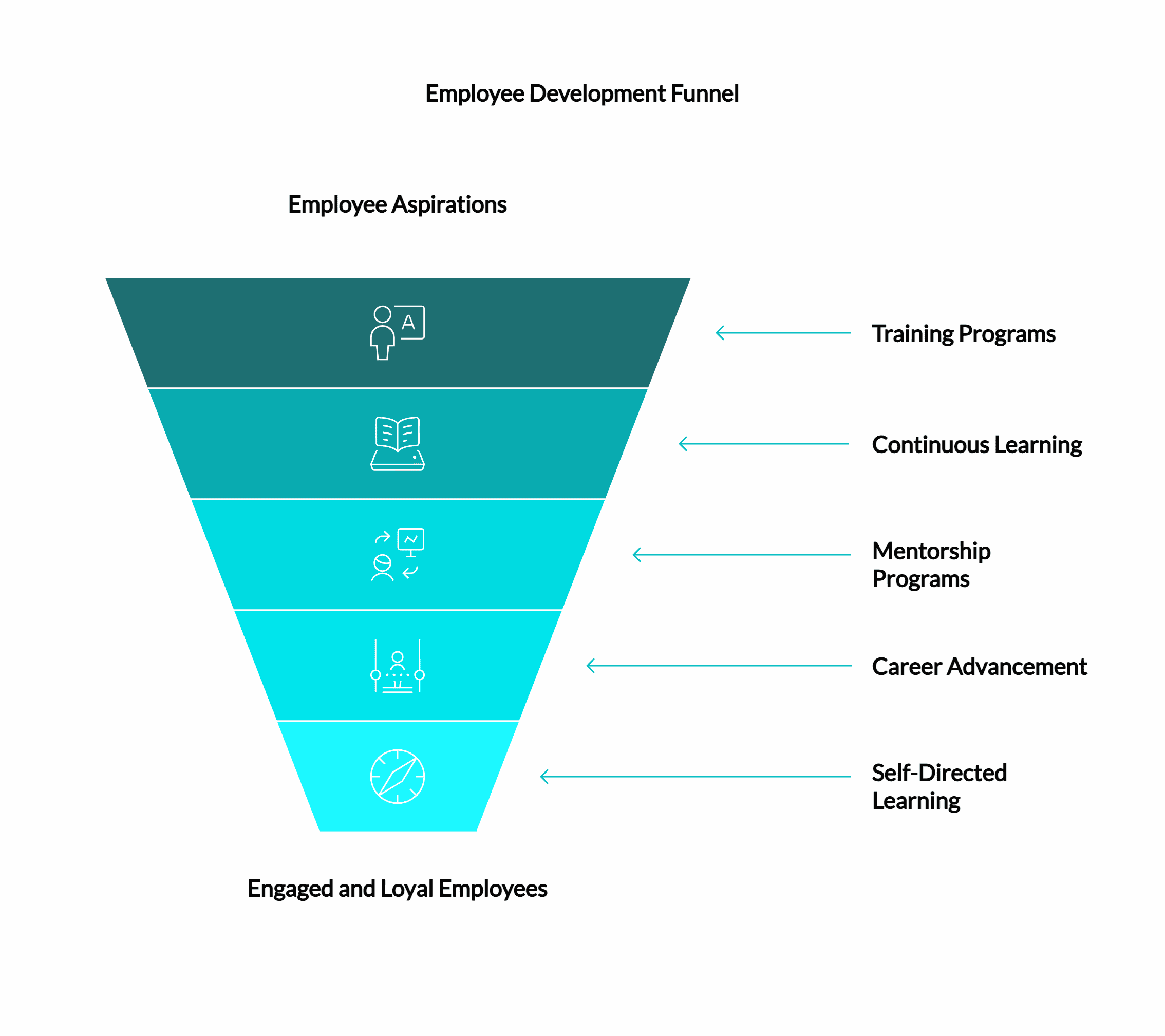
For many, just coming to the office, doing the work assigned, and taking the paycheck back home isn’t enough. They need to know there are sufficient employee growth opportunities for the role they are fulfilling. If your employees feel that you don’t care about their professional development, they may begin to look for work elsewhere.
Whether it’s by running a proprietary training program or sponsoring higher education for your employees, you are not only investing in the future of your company but also creating a sense of loyalty among your employees.
Remember, every employee loves a company that supports them in their professional career and adds value to their personal lives. Want to retain top-notch talent in your organization? Ensure their professional growth and you will reap the benefits.
Providing opportunities for employee development and engagement can be a powerful way to improve employee engagement and drive better outcomes for your business. Here are a few strategies you might consider:
1) Offer training and development programs: Workshops, seminars, or online courses help employees learn new skills or advance in their careers.
2) Encourage continuous learning: Learning opportunities outside of formal training programs can include attending conferences, participating in webinars, or taking online courses.
3) Set up mentorship programs: Match employees with experienced mentors who can provide guidance and support as they learn and grow.
4) Provide opportunities for career advancement: Offer opportunities for employees to take on new challenges and responsibilities, such as leading a team or taking on a new role within the organization.
5) Promote self-directed learning: Encourage employees to take ownership of their own development by providing them with resources and support to pursue their own learning goals.
Consider conducting a career development survey to understand your employees' aspirations and tailor your development programs accordingly.
12. Hire Quality People Managers
Your secret weapon to spur employee engagement is the managers—they are the middlemen between boardroom members and the employees. In most cases, the employees interact with the top-level executives rarely, if ever, but have daily interactions with their immediate bosses. Whether they are feeling secure, angry, or ignored depends on how you manage employees.
Gallup’s chairman, Jim Clifton, once said:
“Employees—especially the stars—join a company and then quit their manager. It may not be the manager's fault so much as these managers have not been prepared to coach the new workforce.”
While organizations can choose to educate their managers on how to better engage their employees, it’s always better to hire a capable manager first. Check their professional background and try to see if they are suited for the tricky job waiting for them. Investing in leadership development programs can also help managers become more effective in engaging their teams.
13. Introduce Team-Building Activities
Team-building activities can be a great way to improve employee engagement and foster a positive work culture. Here are a few ideas for team-building activities that you might consider:
a) Trust-building exercises: Some of the examples include the "Human Knot" or the "Trust Fall."
b) Communication challenges: Activities that require team members to communicate effectively can help improve team collaboration.
c) Problem-solving activities: Examples might include "Escape the Room" or "Mars Mission."
d) Outdoor activities: Getting team members out of the office can help them bond and have fun together. It can include a team hiking or camping trip, or a group outing to a ropes course or other adventure activity.
e) Creative activities: This can be in the form of painting or art competitions, singing and dancing events, etc.
It's important to choose activities that are appropriate for your team and that align with your goals for employee engagement.
14. Provide Incentives for Work Achievement
Incentives can be a powerful tool for motivating and engaging employees. Here are a few ideas for incentives that you might consider
-
Monetary rewards: Bonuses, pay raises, and other financial incentives
-
Time off: Offering additional vacation days or flexible work arrangements
-
Recognition: Publicly recognize and praise employees for their hard work, or send a hand-written note
-
Professional development opportunities: Training programs, mentorship opportunities, or professional certification courses.
-
Special perks: Reserved parking spot or a choice of office location
Another option is a recognition and employee rewards solution, like Workmates. Our solution is customizable and offers a unique set of advantages, as an ideal recognition solution. Workmates increase employee engagement and boost productivity in the workplace.
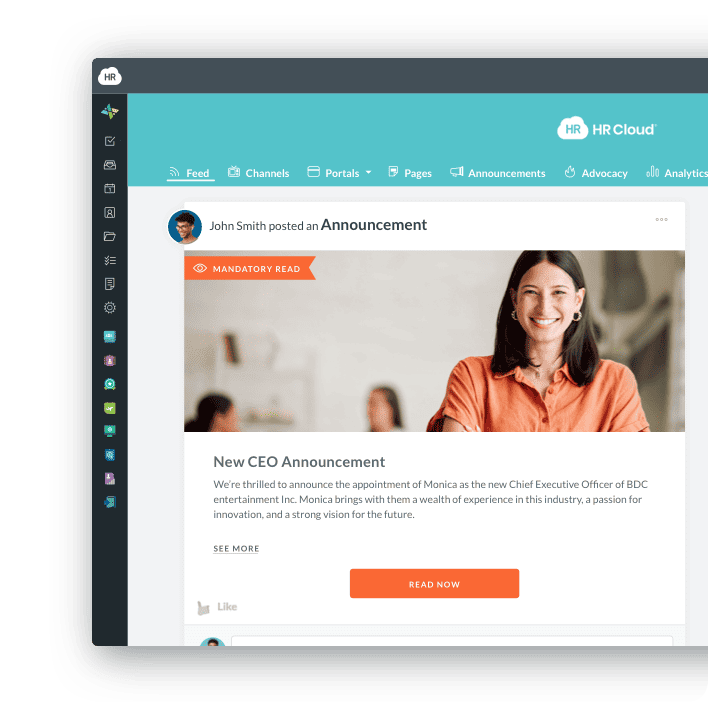
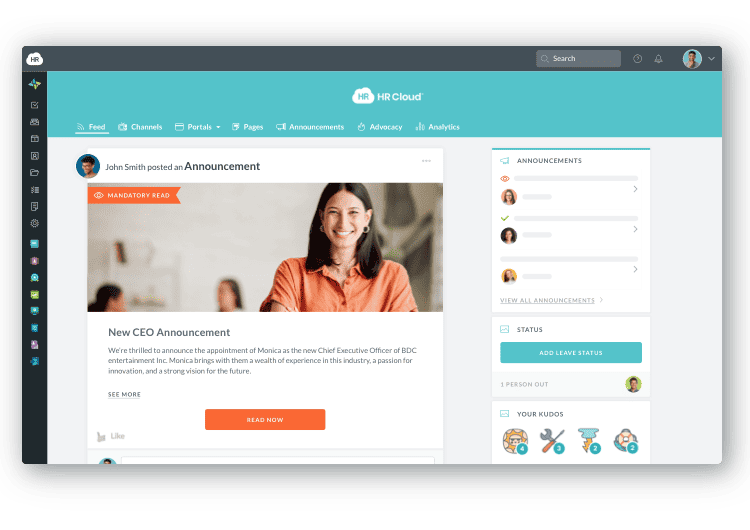
15. Encourage Collaboration
Encouraging collaboration can be a powerful way to improve employee engagement and drive better outcomes for your business. Here are a few strategies you might consider:
I) Encourage employees from different departments or teams to work together on projects or tasks. This can help break down silos and foster a sense of teamwork.
II) Create a culture of open dialogue using a collaboration tool for idea and feedback exchange.
III) Host team-building activities or outings that encourage employees to get to know one another and work together in a more relaxed setting.
IV) Encourage a culture of collaboration and teamwork by recognizing and rewarding team contributions and successes.
V) Utilize tools like project management software, virtual meeting platforms, and online collaboration spaces to make it easier for employees to work together and share ideas.
16. Facilitate Two-Way Communication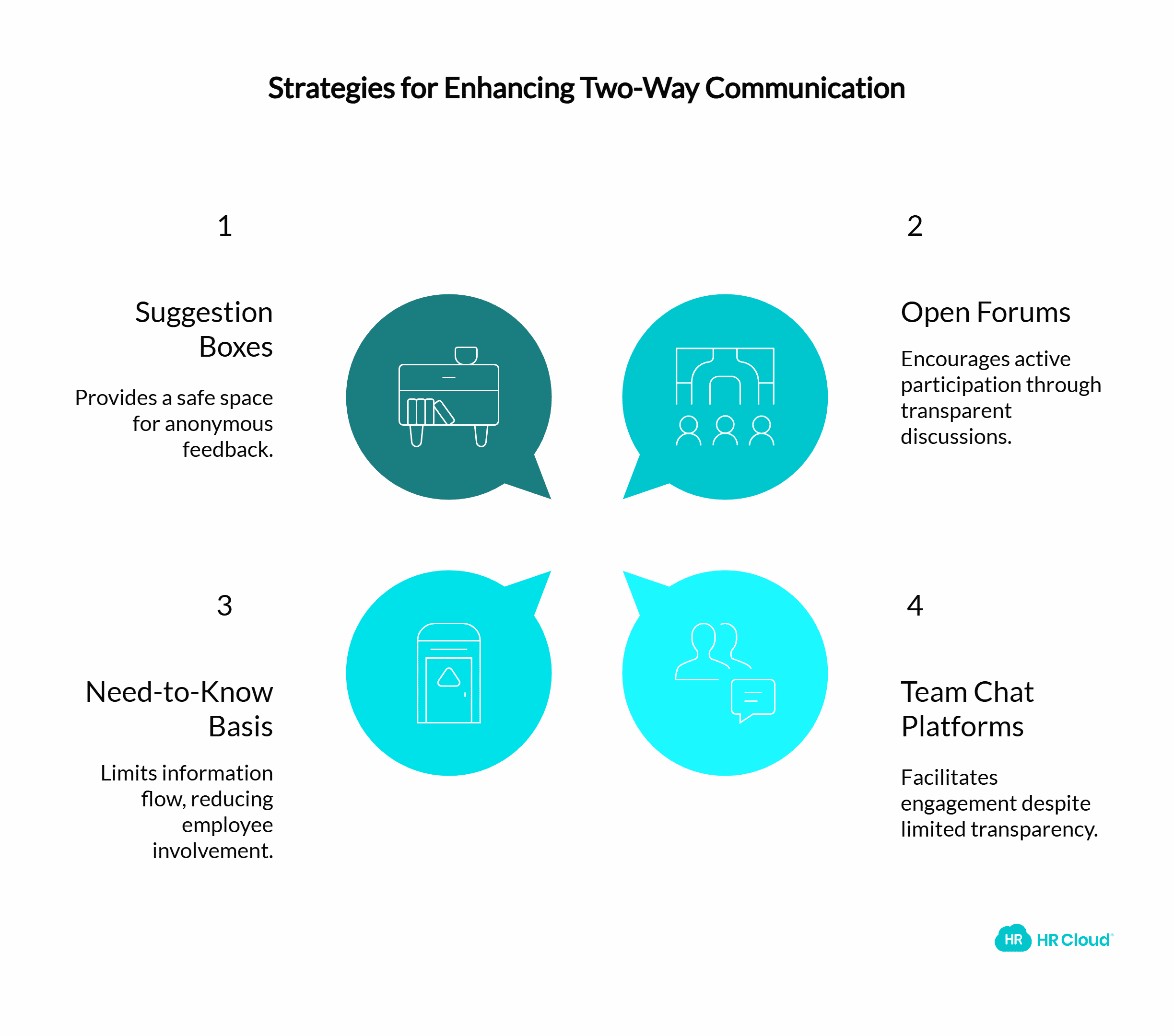
Top business leaders generally believe in the open door policy and do not use “top-secret” information to their advantage. If organizations act secretive and only divulge information on a “need-to-know” basis, it will likely cause lower engagement rates among their employees.
Transparency begets trust when employees understand how corporate decisions affect the workplace.
But simply disseminating information isn’t enough. Communication should go two ways—the employees should be encouraged to share their concerns so they don’t feel ignored or unvalued. Here are a few strategies that can help your organization:
- Create a culture where it's safe for employees to share their ideas, concerns, and feedback. This might involve setting aside dedicated time for open discussions or establishing a suggestion box where employees can anonymously share ideas.
- Encourage employees to communicate openly and honestly with one another and with management. This might involve creating dedicated channels for communication, such as a team chat platform or a suggestion forum.
- Be open and transparent with employees about company goals, plans, and challenges.
- Regularly solicit feedback from employees and actively listen to their ideas and concerns. This might involve hosting team meetings or one-on-one conversations with employees.
- As a leader, model open and honest communication by being approachable and transparent in your own communication style.
Implementing an effective employee feedback loop can significantly improve communication and engagement within the organization.
17. Utilize HR Software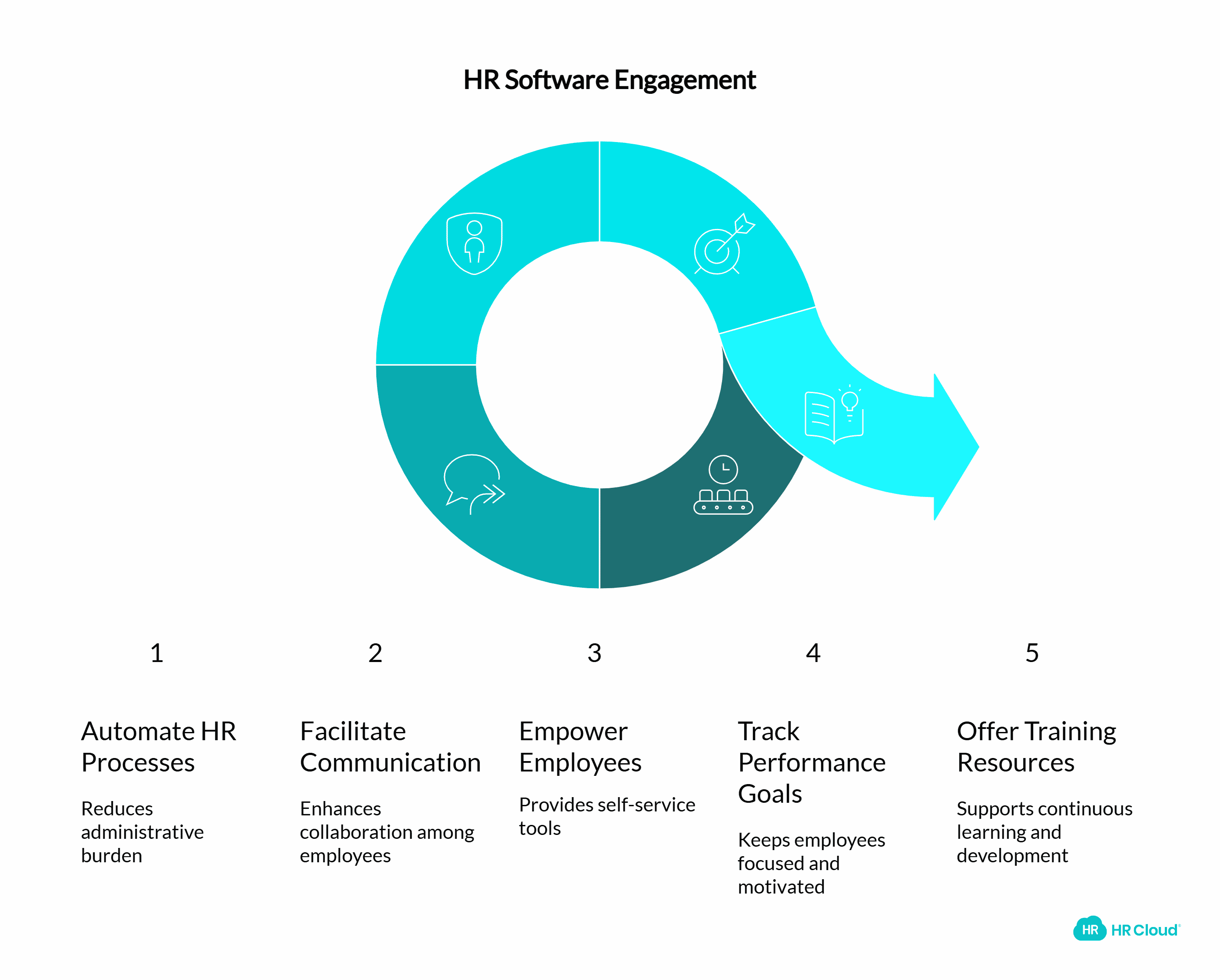
Implementing HR software can be a powerful way to improve employee engagement and streamline HR processes. Here are a few ways that HR software can support employee engagement:
1. HR software can help automate HR processes, such as payroll, benefits management, and time and attendance tracking. This can help reduce the administrative burden for HR staff and free up more time for engagement and development efforts.
2. Many HR software platforms offer features such as team chat, task management, and document sharing, which can help facilitate communication and collaboration among employees.
3. HR software can provide employees with access to self-service tools, such as a portal for viewing and updating personal information or requesting time off. This can help empower employees and improve their overall experience with HR.
4. Some HR software platforms offer tools for setting and tracking performance goals, which can help employees stay focused and motivated.
5. Many HR software platforms offer features such as learning management systems, which can help employees access training materials and track their progress.
18. Conduct Employee Surveys
Circulate questionnaires and surveys that permit your employees to express their opinions and concerns. The more you ask for their opinions, the more they feel esteemed, entitled, respected, and like they belong to the organization.
Conduct the survey in such a way that it will yield the most thoughtful, timely responses. The catch here is to keep the surveys short and conduct frequent employee-pulse surveys. This lets employees think properly and reply at a higher rate.
Additionally, it’s a great idea to build a habit of transparency and share the results. Sharing all the data collected from surveys will demonstrate transparency and help you to engage employees. These surveys can provide valuable insights into employee sentiment and help you gauge the overall employee satisfaction levels.
19. Engage Departing Employees
Offer appropriate transparency when offboarding an employee. Each will have their own reasons why they depart. The appropriate details provided by the team members when they depart can aid the rest of the employees in processing the change without making cynical guesswork.
Apart from that, recognize your employees’ reasons why they are leaving voluntarily. When you understand and categorize the reasons employees leave, it will help your organization to improve and potentially increase your employee retention rate.
If any engaged employees are leaving voluntarily, stay connected with them. You can consider curating alumni networks to be in contact with past employees. It will give you access to expanded networking and employment opportunities. Plus, it might make some employees come back to your organization with new skills and experiences when new positions open up.

Keep Reading
15 Proven Ways to Create a Healthy Work Environment (2026 Guide)
A healthy work environment is a workplace where employees experience psychological
Best Workday Alternatives for Mid-Market Companies in 2026: Complete HRIS Comparison Guide
"We implemented Workday and our HR team still can't figure out half the features six
Company Culture Software: How to Build a Thriving Workplace in 2026
Ask any business leader what drives lasting organizational success, and you'll hear
Like What You Hear?
We'd love to chat with you more about how HR Cloud® can support your business's HR needs. Book Your Free Demo

Build a Culture of Recognition. Boost Engagement. Guaranteed.
Workmates empowers employees to stay informed, connected, and appreciated—whether they’re on the front line, in the office, or remote. Recognition drives 12x higher engagement.Trusted by industry leaders in every sector




Cut Onboarding Costs by 60%.
Take the confusion and follow-ups out of onboarding with automated workflows, digital forms, and structured portals—so new hires ramp faster 3X quicker.Trusted by industry leaders in every sector




